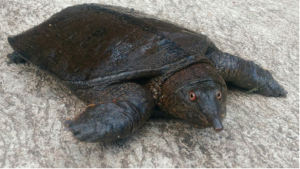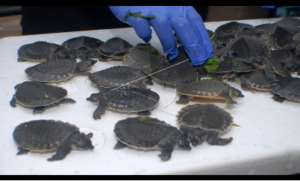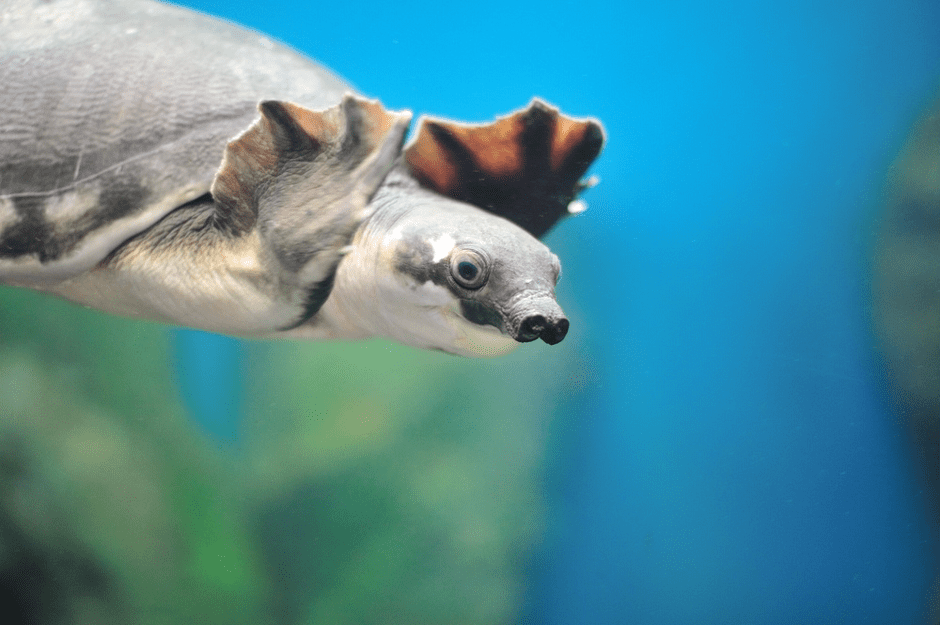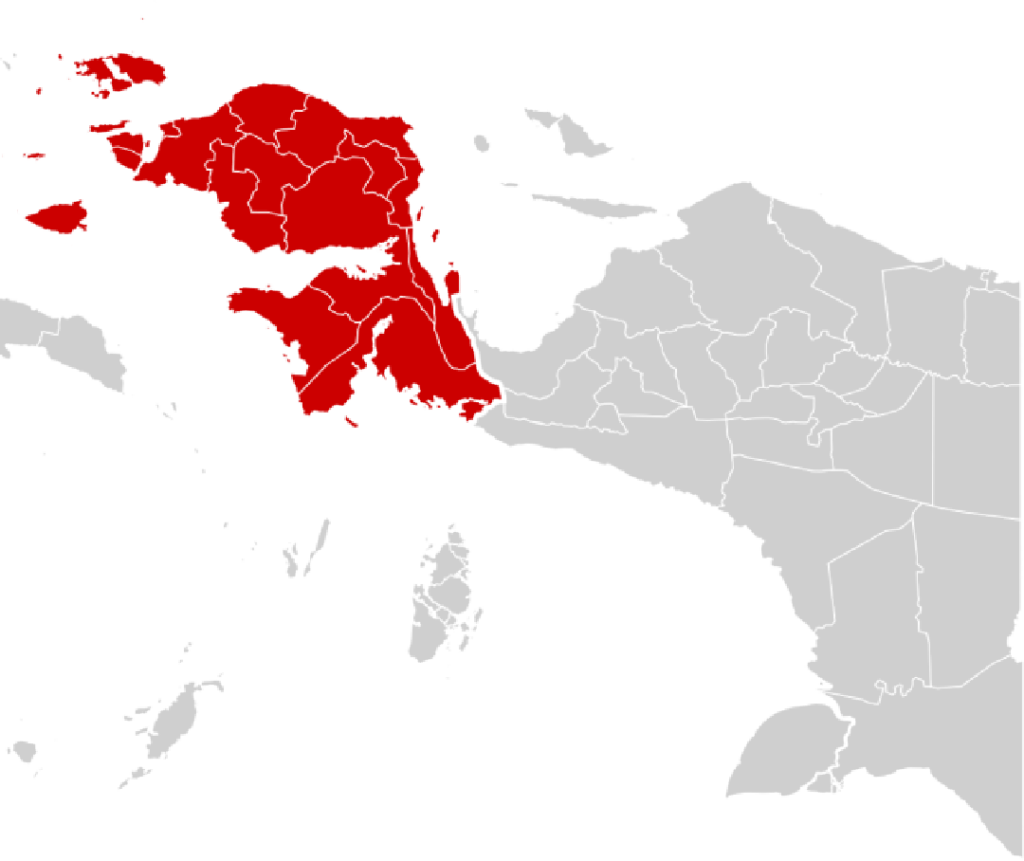PAPUAN – Labi-labi, often called Bulus, is a type of soft-shelled turtle or soft-shelled freshwater turtle, characterized by an oval or slightly round body shape, but more flattened and without scales, the color of the labi-labi is usually gray to black, depending on the species, one of the unique species of labi-labi is the type of pig-snouted labi-labi. The animal with the scientific name Carettochelys insculpta is referred to in English as pig nosed turtle, plateless turtle, or pitted-shell turtle.
The pig-snouted labi-labi is endemic to Papua and its last refuge is in the Mount Lorentz National Park area, this unique animal is also not free from the threat of poaching, illegal trade, to the worst extinction.
The character of the pig-snouted pigmy, not similar to other freshwater turtles but the pig-snouted pigmy does not have legs to move and instead the pigmy moves using flippers like a turtle and can swim freely. The characteristic of this animal, as the name implies, lies in its pig-like nose and the carapace or shell on the top is gray with a rough texture, while the plastron or hard skin that protects the chest is beige.
Male and female pig-snouted pigs are usually distinguished by tail length and body size, this species can grow to about 70 cm in carapace length and weigh more than 20 kilograms. Pig-snouted pigs can live in fresh and brackish water and then forage on the banks of rivers, lakes, and estuaries. Their diet is usually plants, fruits, fish and invertebrates as they are omnivorous. They mostly consume figs, kiwi, apples, bananas, shrimps, worms, and mouse pups.

This type of turtle breeds during the dry season between August and October each year to become the egg-laying season and after passing the breeding season and entering the egg-laying period, the female rabbits will come out of the water to deposit eggs at the base of the water. The sex of these wallabies is also strongly influenced by the surrounding temperature, if the temperature decreases by half a degree, male wallabies will usually be born and vice versa, female wallabies are usually born when the temperature increases by half a degree.
The preferred habitat of pig-snouted wallabies are riverine areas, estuaries, lagoons, lakes, ponds, and swamps surrounded by dense forests and apart from Papua, the distribution of this animal has also been found in Papua New Guinea to Australia, like other turtles in remote locations pig-snouted wallabies are also believed to be rare and there is no precise population data at this time. It is known that Australia has protected this animal from exploitation, but from Papua New Guinea there seems to be no conservation measures, these pigs have been found in Japan for sale.

Adult pig-snouted wallabies require large ponds or streams and smaller individuals can live in small ponds with plants and hiding places for shelter. Water temperature must be maintained between 26.1-30 degrees Celsius and not only temperature, but also water quality is important with a biological filter system, when water quality is poor then the pigs will be at risk of skin disorders from fungi or bacteria on the carapace and pigs do not need special basking places, but there must be access to the ground for adult females to nest and lay eggs. Adult females usually need an incubation period of 60-70 days and can lay from 7 to 39 eggs.
Pig-snouted wallabies with all their uniqueness are under threat even in their native habitat, the existence of these wallabies is threatened by illegal wildlife trade, even reaching thousands of wallabies smuggled from Papua to the international market, wallabies are traded for exotic food to traditional medicine in China and thousands of eggs have also been taken directly from nature illegally to hatch because there is no special breeding.
The status of the pig-snouted labi-labi is internationally on the endangered or threatened list and is recorded in the International Union Conservation Nature (IUCN), this status is to remind us that two more levels will lead to extinction. These pigs have also been categorized as Appendix II by the Convention International Trade in Endangered Species of Wild Flora and Fauna and this means that this species is on the endangered list if trade continues without clear regulation, in Indonesia pigs are included in the list of protected animals according to the Minister of Environment and Forestry Regulation No. 106/MENLHK/SETJEN/KUM.1/12/2018 concerning the second amendment to the Minister of Environment and Forestry Regulation Number P.20/MENLHK/SETJEN/KUM.1/6/2018 concerning protected plant and animal species.


